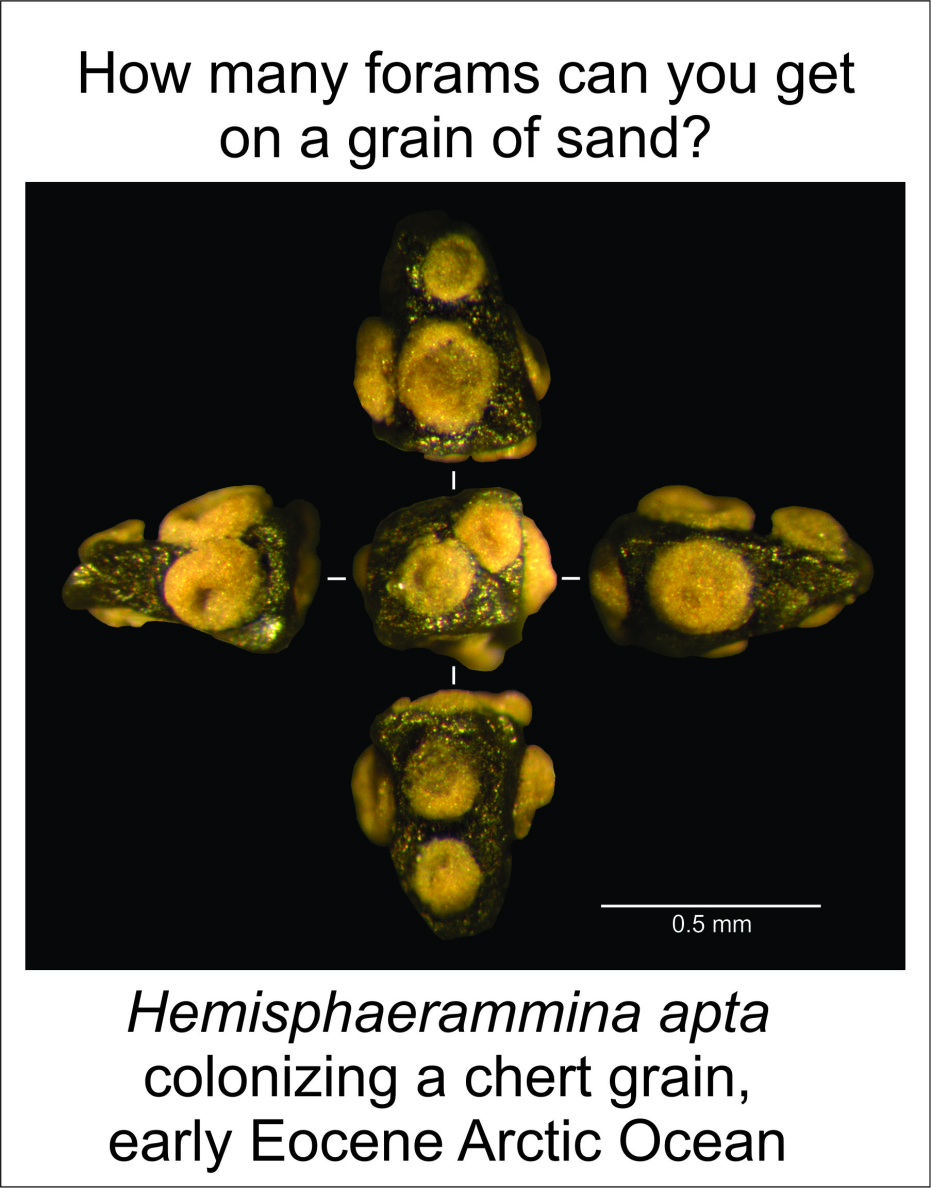The early Eocene (41-56 million years ago) was a warm, dark and stormy place. At the start of the Eocene an extreme warming event affected the entire world affecting different organisms to a greater or lesser extent. In the Arctic, benthic foraminifera were essentially exterminated in a mass extinction. When climatic conditions returned to normal (warm and wet), a new assemblage of foraminifer colonized the Arctic region. Oceanic conditions at the time imposed constraints on the types of organisms that could adapt. Primitive agglutinated foraminifera were tolerant of the low salinity marine waters of the early Eocene and a new assemblage of species colonized the Arctic seafloor. The new populations of foraminifera have been described to some extent by McNeil (1996) in the Beaufort-Mackenzie Delta Atlas and other publications. Research is in progress on a group of foraminifera – monothalamous forams – that were abundant in the early Eocene.
Below is a specific example of the specialized agglutinated foraminifera that adapted to the early Eocene Arctic Ocean. These tiny microfossils were tossed and turned across the ocean floor and protected themselves by attaching to sands grains.

For more information on foraminifera of the early Eocene Arctic Ocean see: